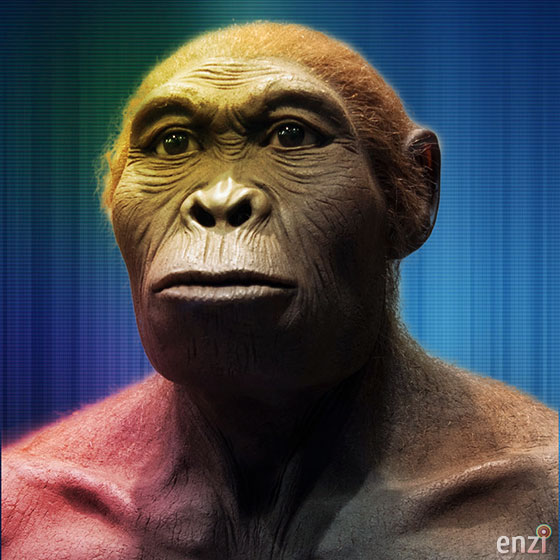Homo habilis
Discovered in 1960 by a team led by Louis and Mary Leakey at Olduvai Gorge, Tanzania, Homo Habilis lived in Eastern and Southern Africa 2.4 million to 1.4 million years ago. This species is one of the earliest members of the genus Homo and has a slightly larger braincase and smaller face and teeth than in Australopithecus or older hominin species. But it still retains some ape-like features, including long arms and a slightly projecting (prognatic) lower jaw or chin.

Homo habilis
Homo habilis was named ‘handy man’, in 1964 because this species was thought to represent the first stone-tool maker. Currently, the oldest stone tools are dated slightly older than the oldest evidence of the genus Homo. This species, along with H. rudolfensis, is one of the earliest members of the genus Homo. Many scientists think it is an ancestor of later species of Homo, possibly on our own branch of the family tree.
Recent discoveries in 2000 of a 1.44 million-year-old Homo habilis (KNM-ER 42703) and a 1.55 million-year-old H. erectus (KNM-ER 42700) from the same area of northern Kenya (Ileret, Lake Turkana) challenged the conventional view that these species evolved one after the other. Instead, this evidence – along with other fossils – demonstrate that they co-existed in Eastern Africa for almost half a million years.
H. habilis’s had a brain capacity of 363 and 600 cm³ (about 50% larger than Australopithecines) averaged 3 ft 4 in to 4 ft 5 in (100 – 135 cm). Male-female body size difference is uncertain, because most post-cranial remains have not been attributed to male or female.
Early Homo had smaller teeth than Australopithecus. Their tooth enamel was still thick and their jaws were strong, indicating their teeth were adapted to chewing some hard foods (maybe seasonally when their preferred foods became less available). Dental microwear studies suggest that the diet of H. habilis was flexible and versatile and that they were capable of eating a broad range of foods, including some tougher foods like leaves, woody plants, and some animal tissues, but that they did not routinely consume or specialize in eating hard foods like brittle nuts or seeds, dried meat, or very hard tubers.
Another line of evidence for the diet of H. habilis comes from some of the earliest cut and percussion-marked bones, found back to 2.6 million years ago. Scientists usually associate these traces of butchery of large animals which are evidence of meat and marrow eating, with the earliest appearance of the genus Homo, including H. habilis.
Many scientists think early Homo, including H. habilis, made and used the first stone tools found in the archaeological record—these also date back to about 2.6 million years ago; however, this hypothesis is difficult to test because several other species of early human lived at the same time, and in the same geographic area, as where traces of the earliest tool use have been found.